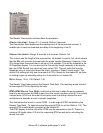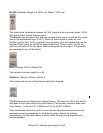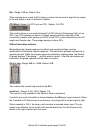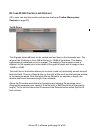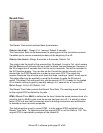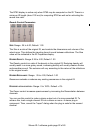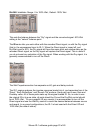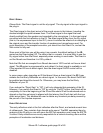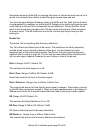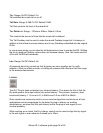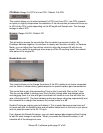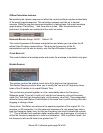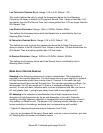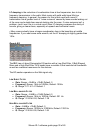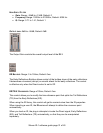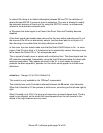Sometimes shutting off the ERs or reducing their level vs. the tail level will leave a lot of
reverb, but will sound less distant so that the signal sounds close and wet.
You can also apply different Predelay values to the ERs and Tail. Note that the division
is implemented by crossfade, so sliding the ER Predelay only slightly will produce some
comb filtering in the part that overlaps with the tail reflections. Turning the ERs off will
result in the reverb going straight to the Tail part, which will give less of the perception
of a room sound. This will sound less true-to-life, but that may be just what you are
looking for.
R
EVERB TAIL
The reverb Tail is everything after the early reflections.
The Tail is the most diffused part of the reverb. The reflections are totally dispersed,
and the sound is like a smooth smearing of the input. It is the longest and most
significant part of the reverb and its decay. The Reverb Tail has a spectral damping
signature that is unique to each IR. The Tail can be used without Early reflections and
you can also apply negative Predelay to have it closer in time to the source.
D
IRECT: Range: ON/OFF; Default: Off
This switches the direct signal on or off.
D
IRECT GAIN: Range: 0.0dB to Off; Default: 0.0dB
Direct Gain controls the level of the direct signal.
DIRECT PREDELAY: Range: 0ms to 500ms; Default: 0ms
This controls the amount of time that the direct signal is delayed. Direct delay is bound
by the ER delay and cannot exceed it. When you apply separate gains or pre-delays to
different parts of the IR, automatic cross-fades are used by the plug-in when needed.
ER: Range:
On/Off; Default: On
This switches the Early Reflections On or Off.
ER
GAIN: Range: 0.0dB to Off; Default: 0.0dB
ER Gain controls the level of the early reflections.
ER
PREDELAY: Range: 0ms to 500ms; Default: 0ms
This controls the amount that the early reflections are delayed.
Waves IR-1 software guide page 25 of 40



